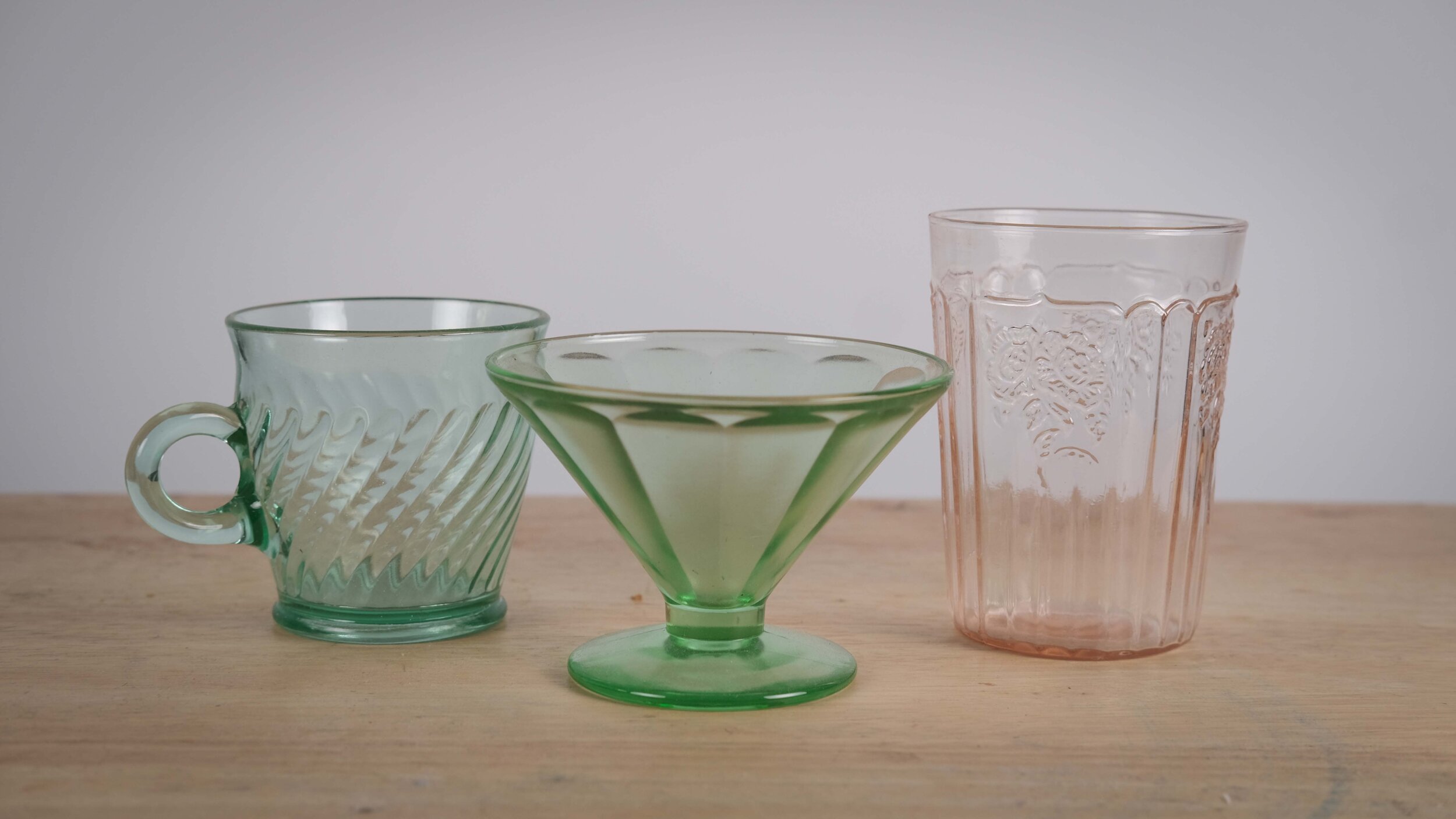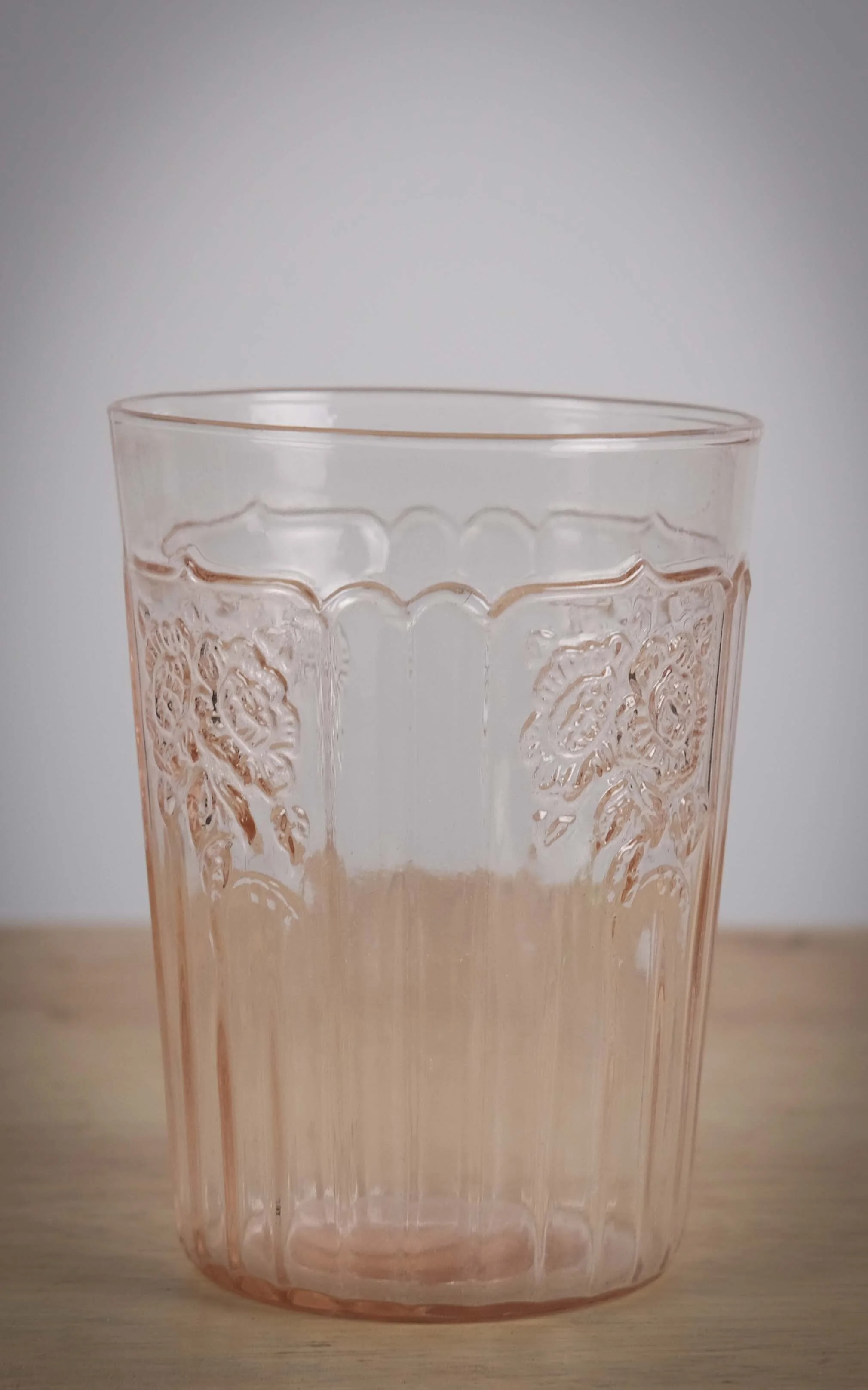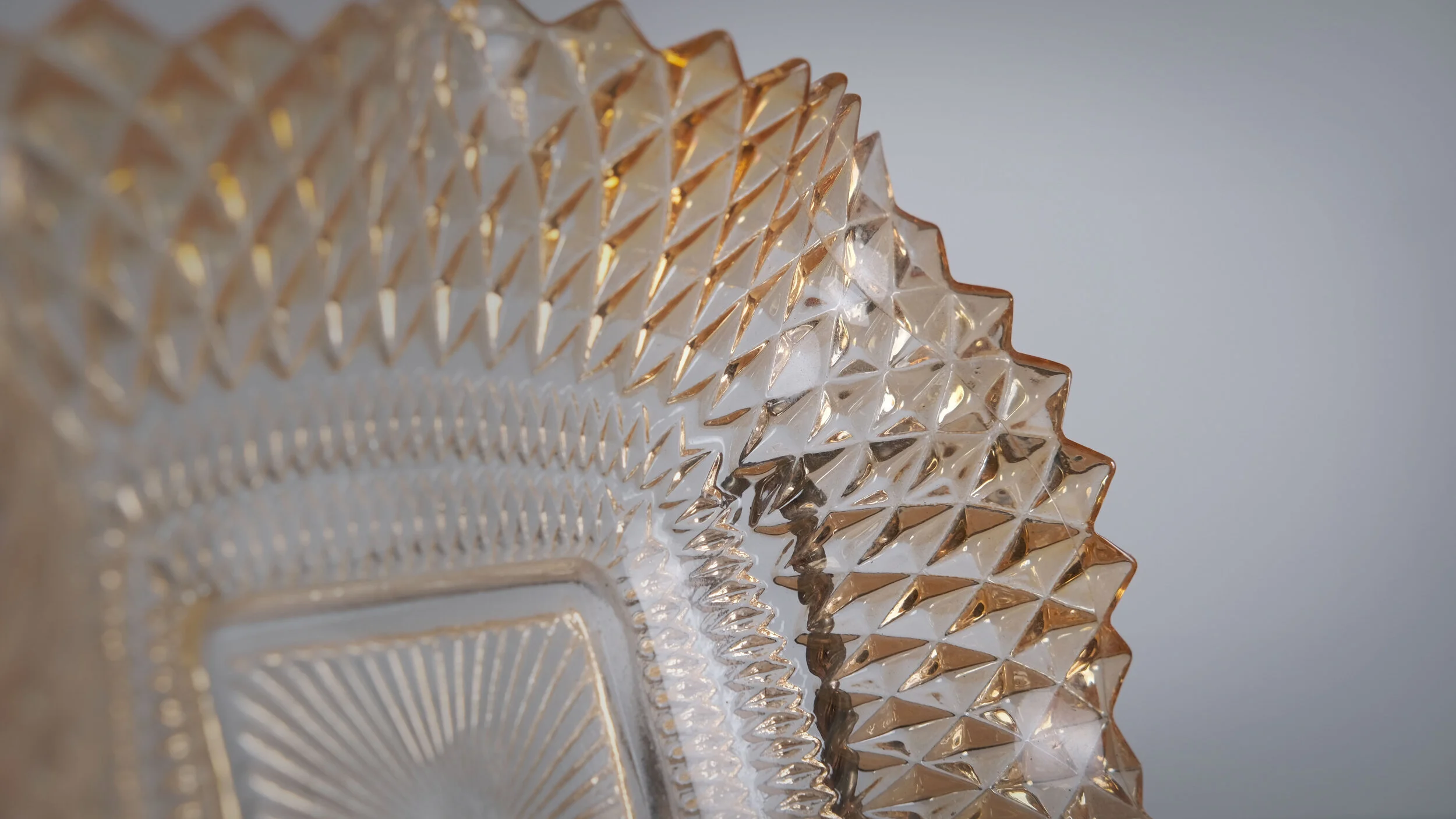
Depression Glass
Our featured collection showcases depression glass, which was commonly used in the homes of Inverness miners during and after The Great Depression. Scroll down to discover its fascinating history.
What is it?
This is a term used to denote glassware that was produced between 1929-1939. This glassware was either clear or coloured translucent to make it more attractive. It was distributed free or at low cost to the purchaser and usually, as part of an advertising campaign especially in low-cost cereals like Quaker Oats and movie theatres and businesses gave the glassware to their patrons. You collected so many coupons of the item, turned them into the store and received a piece of the glassware. It is referred to as depression glass since it was machine-made during the time of the Great Depression and came in pinks, mauves, greens and yellows. Depression glass was produced mainly for use in the kitchen: plates, cups and saucers, serving bowls, pitchers, butter dishes, salt and pepper shakers, and cream and sugar sets. There were also a few items that could be used in the living room such as coasters, candlesticks and candy jars.
Glass Origins
Since it was machine made it sometimes had rough edging where the mould came together. Most of the glassware was manufactured in the Ohio River Valley in the United States where power and raw materials were abundant. At one point there were 100 different patterns in a wide range of colours. Some manufacturers made full dinner sets from salt and pepper shakers to dinner plates, nappies and teacups. The collection at the Inverness Miners Museum has a variety of colours but mainly the most common colour, green. This would have been used in many if not all of the miner’s homes and as a result, many pieces such as water glasses are hard to find since they were so useful and utilized daily. Come in and enjoy our extensive display that brings you to a different way of life in the coalfields of Inverness.









